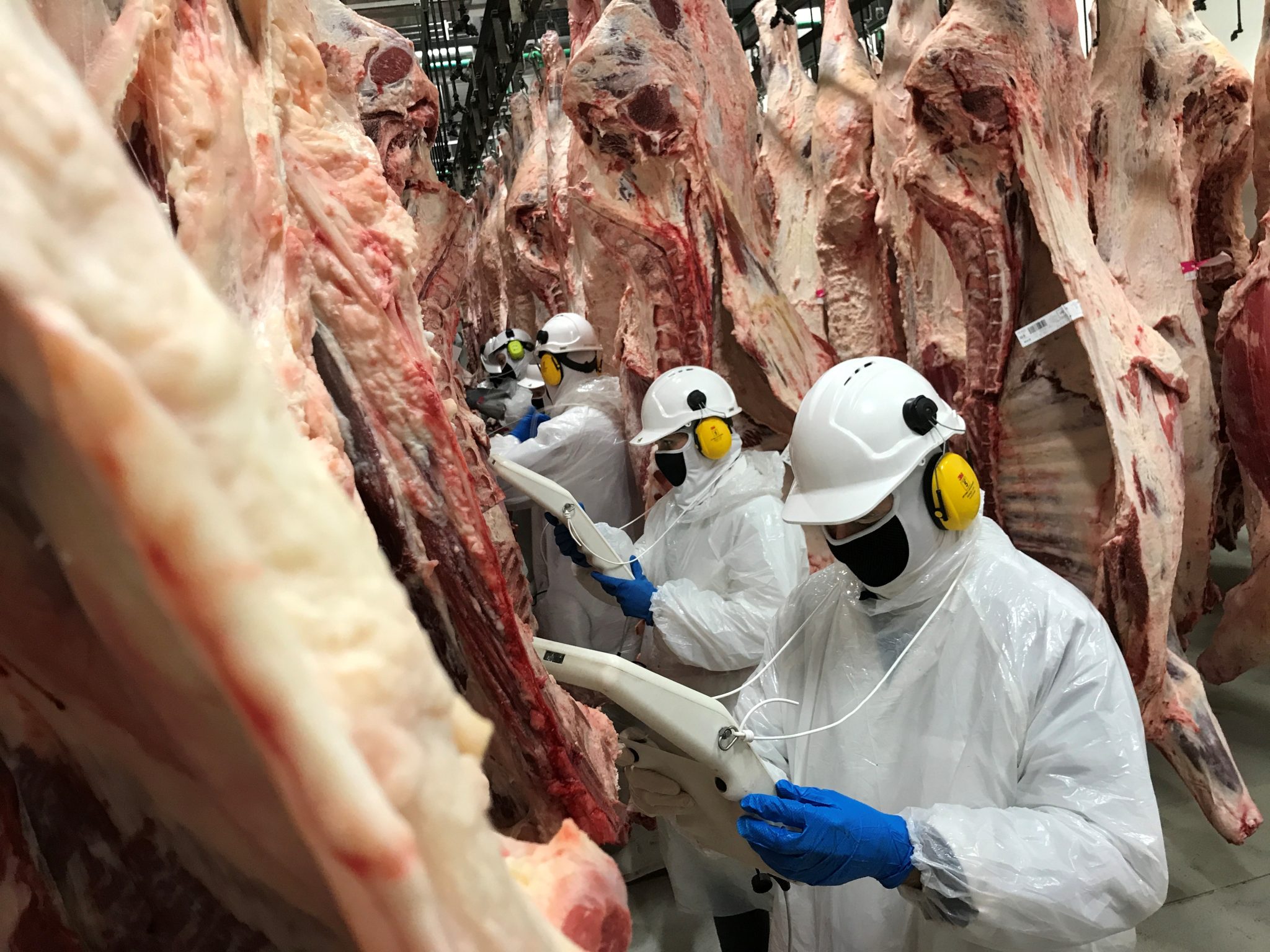25 JUNE 2024: Researchers working at Australian Country Choice have successfully trialled new technology taking some of the guesswork out of assessing ribeye meat.
The team from Murdoch University and the University of Sydney were trialling the Q-FOM™ beef grading camera.
Grading and classification of beef carcasses are traditionally done by certified graders, who visually assess the ribeye. Grading this way is strenuous and subjective and the results from different graders, or even from the same grader over the course of a day, can vary significantly.
Reporting in the peer-reviewed journal Meat Science, the team said the camera delivered 95% of the variation in mean eye muscle area assessments from Meat Standards Australia (MSA)-certified graders.
“The Q-FOM™ also demonstrated very high repeatability and reproducibility across all traits,” the researchers said.
They sought to develop calibration models against rib eye traits and independently validate precision, accuracy and the camera’s repeatability.
The study compiled 12 different research datasets across a range of carcass phenotypes, graded by industry-identified expert MSA graders and sampled for chemical intramuscular fat.
The Danish camera took only seconds to measure standard parameters with a single picture of the ribeye include marbling, fat colour, meat colour and eye muscle area.
The hand-held device acquires images of the cut surface by coupling a 3D camera with a high-resolution 2D camera, enabling correct colour and area representation, while maintaining high resolution of the eye muscle area. Two high-intensity diffused LED panels illuminate the cut surface, minimising the negative effects of ambient light.
According to lead researcher Sarah Stewart the application of automated technologies in the meat industry is challenging as carcasses are inconsistent in presentation due to phenotype and genotype, and processing factors.
For example, the size, shape and quality of presentation of the eye muscle and marbling, meat colour and fat depths differ for every carcass, making image segmentation and analysis complex.
“Objective carcass measurement has the capacity to transform the Australian beef industry by delivering precise, accurate and repeatable grading data which can inform decisions throughout the value chain,” Ms Stewart said.
“This study demonstrated that the Q-FOM beef grading camera accurately and precisely determined AUS-MEAT and MSA rib eye traits across a broad range of carcass phenotypes, relevant to the diversity of Australian beef supply chains.”
ACC’s R&D manager Paul Gibson said: “Objective measurement delivered by transformative technology is a paradigm shift and will change how the industry does business.”
The trial was was co-funded by the Meat and Livestock Australia Donor Company, in conjunction with commercial partners Frontmatec A/S and ACC with oversight by the Advanced Livestock Measurement Technologies (ALMTech) project, funded by the Australian Government.


